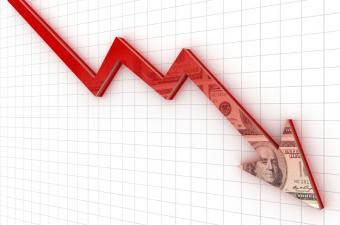Reinsurance company profits are expected to fall to a six-year low on the back of recent catastrophe losses, but while the catastrophes are a drag on earnings, they aren’t expected to meaningfully change market dynamics and pricing, A.M. Best says.
 “In some respects this is a dreaded scenario, where losses are significant to drag earnings but not significant to meaningfully change market dynamics and pricing for a sustained period of time,” the rating agency warns in its latest reinsurance sector report.
“In some respects this is a dreaded scenario, where losses are significant to drag earnings but not significant to meaningfully change market dynamics and pricing for a sustained period of time,” the rating agency warns in its latest reinsurance sector report.
The report looks at the overall profitability of A.M. Best’s composite group of global reinsurers and finds that this could drop to a six-year low.
A.M. Best estimates that its composite of reinsurers will report a 2017 combined ratio of 110%, while return on equity (ROE) is expected to range from zero down to -5%. For comparison, the five-year average combined ratio for the reinsurers is 91% and the five-year average ROE 11%.
The last time the reinsurance composite reported a combined ratio of over 100% was in 2011, A.M. Best explains, after the impacts of global catastrophes including the Japanese and new Zealand earthquakes and flooding in Thailand.
The impact to reinsurers could have been much worse in 2017 were it not for the growing use of collateralized reinsurance and retrocession, which A.M. Best says, “played a meaningful role in mitigating the net loss impact from this series of extreme events.”
The impact to reinsurers is varied though, from companies that are estimated to have suffered as much as a 15% hit to equity, to others that are nearer to zero.
Strategy matters in reinsurance and the range of outcomes is broad, A.M. Best explained, “The cumulative losses as a percentage of equity on a gross versus net basis differed by roughly 5-8 percentage points but there were some companies where the disparity was much larger — the largest gap being 23 percentage points.”
A.M. Best’s research found that it could take as much as 5 quarters of business for some reinsurers to earn back their losses.
“Improved rates can speed up this timeline, but some companies may take closer to 2 or 3 years to earn back these losses,” the rating agency explains.
A.M. Best started its analysis with a $90 billion estimate of industry losses and worked out that around $20 billion to $25 billion fell to reinsurance firms, primary companies retained around $45 billion and the remaining $20 billion to $25 billion fell to alternative capital, largely the collateralized reinsurance and retro providers.
No rating actions have been taken on the back of the recent losses, and A.M. Best says that, “While some companies may lose a nominal amount of capital in 2017, this isn’t a significant depletion of capital that will be problematic or disruptive to the market.”
Rather it is the long-term trends that worry A.M. Best and the rating agency doesn’t believe that recent loss events provide the catalyst to change that, it seems.
“Our concern is that the earnings pro le and trend continues to be strained and the year 2017 will weigh on the 5-year average return on equity,” they explain.


